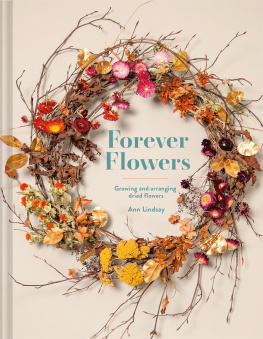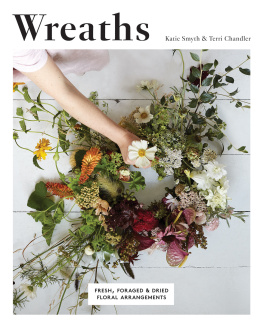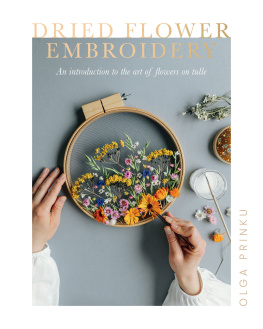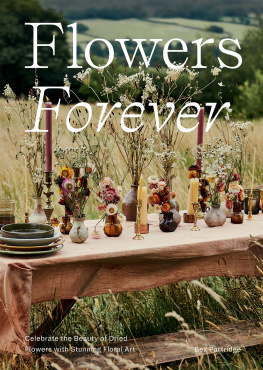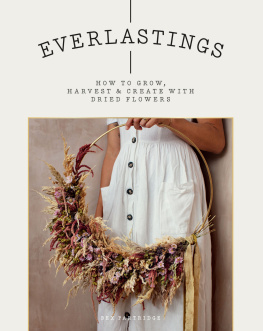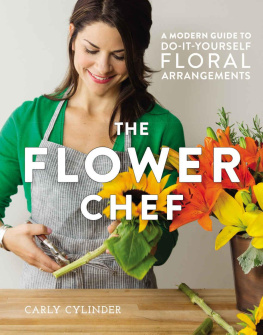Contents
Guide
Dried
Flowers
Morgane Illes
Photography by Herv Goluza

www.davidandcharles.com
Les fleurs qui meurent tt ont besoin dune eau frache ; Toi, tu ris au soleil de juin qui les dessche.
Flowers that soon die are in need of fresh water; But you, you laugh in the June sunshine that dries them.
Jean Aicard, LImmortelle ,
Les Pomes de Provence
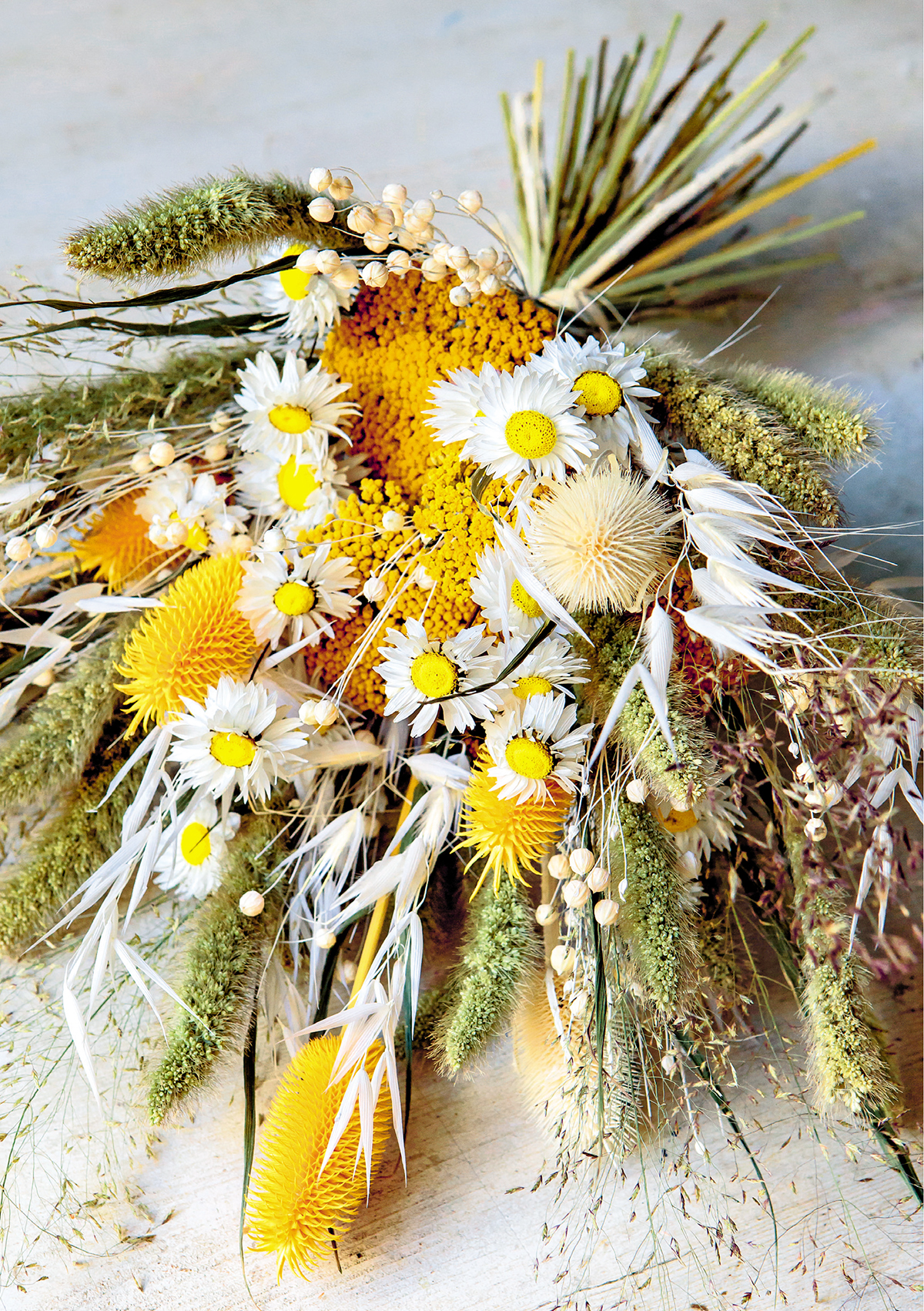
Contents
Timeless flowers
As a florist, Ive found there is less choice of fresh flowers in winter. Using dried flowers has allowed me to work out of season with a wider range of materials, while still respecting nature. I would use dried flowers primarily for their subtle blond hues and powdered shades that I couldnt find in certain fresh flowers.
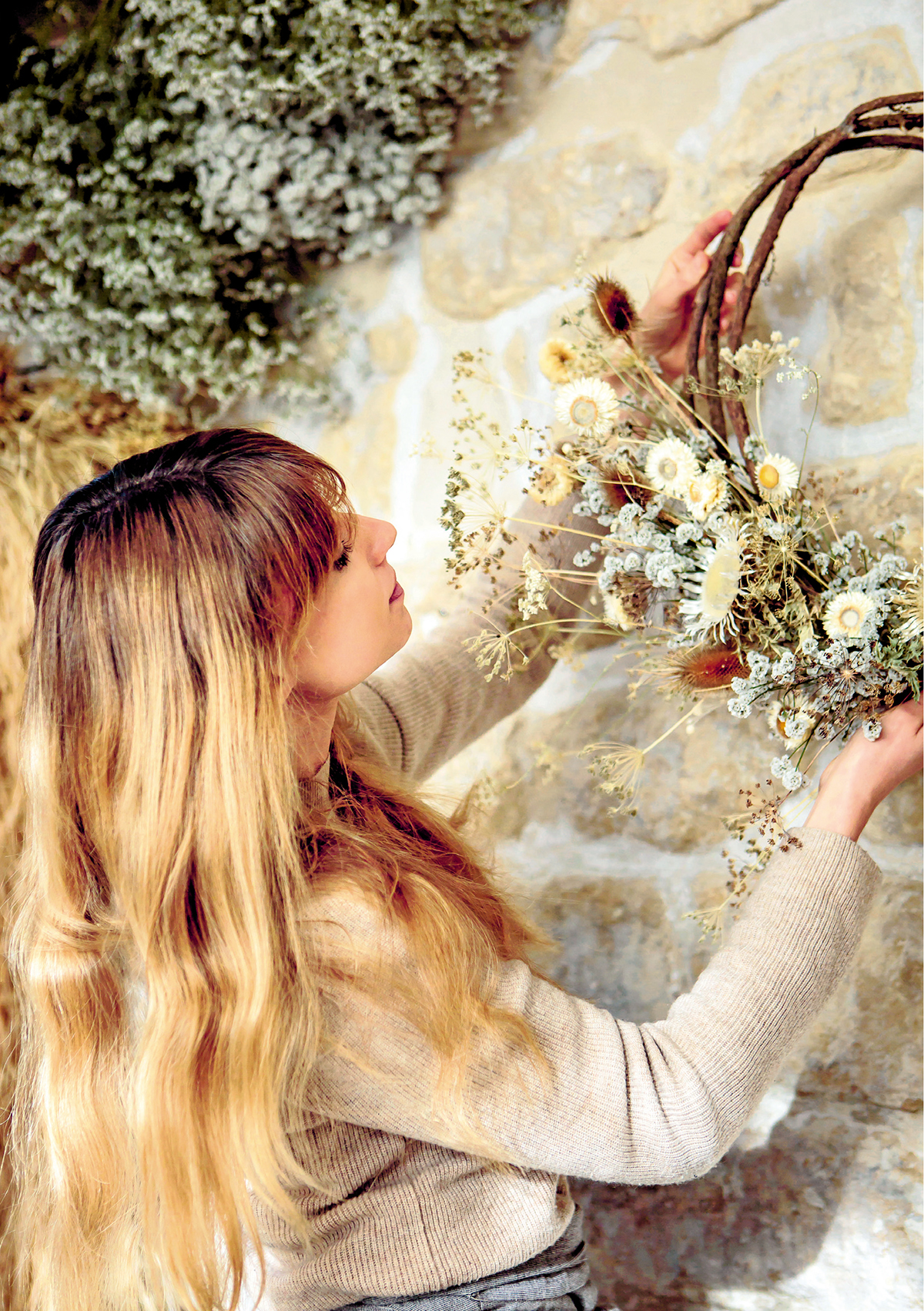
Dried flowers have the power to make time stand still. They have the charm of the past, things to keep as a memory of summer. Their colours change over time, making the blooms into an evolving piece of home decor. Dried flowers are commonly hardy, rustic plants that are able to brave the summer heat to adorn themselves with golden highlights in autumn. We talk of flowers but arrangements often include grasses and cereals. These light, diaphanous, natural forms are ideal for decorating bohemian-style homes.
The most beautiful bouquets are always those I make with flowers Ive gathered. So, I was very keen for this book to present a selection of flowers that are easy for you to gather or dry yourself. It also provides an introduction to drying, with simple tips to follow at home.
I hope this book will tempt you to explore, observe nature closely and look at our fields and waysides differently, to discover and preserve the treasures they contain.
CHAPTER I
Gathering, drying and preserving flowers
From summer to autumn there are many flowers and grasses readily available that are suitable for drying. Just as we make jams and preserves in cooking, you can also simply dry your plants and thus get the benefit of them throughout the year.
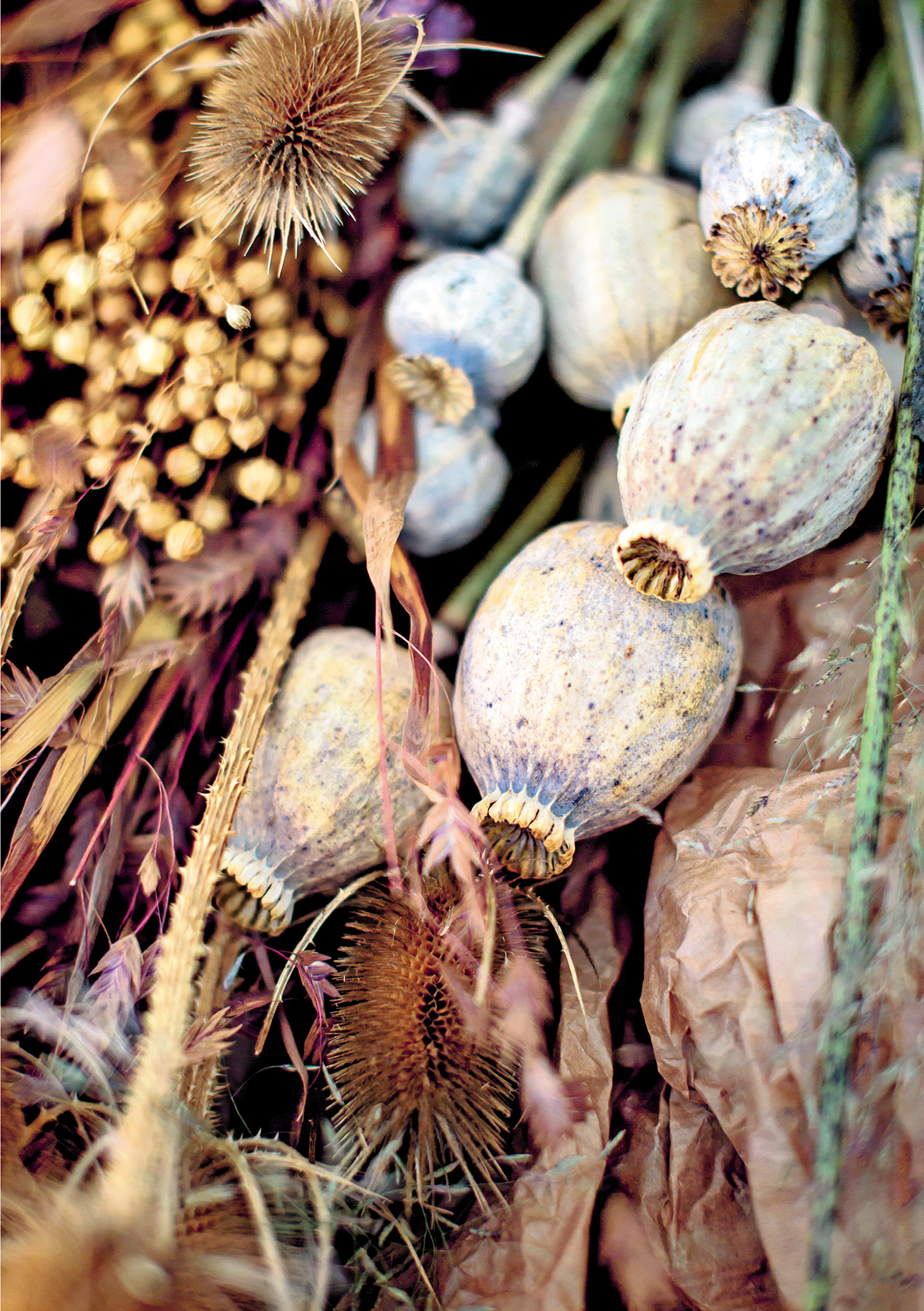
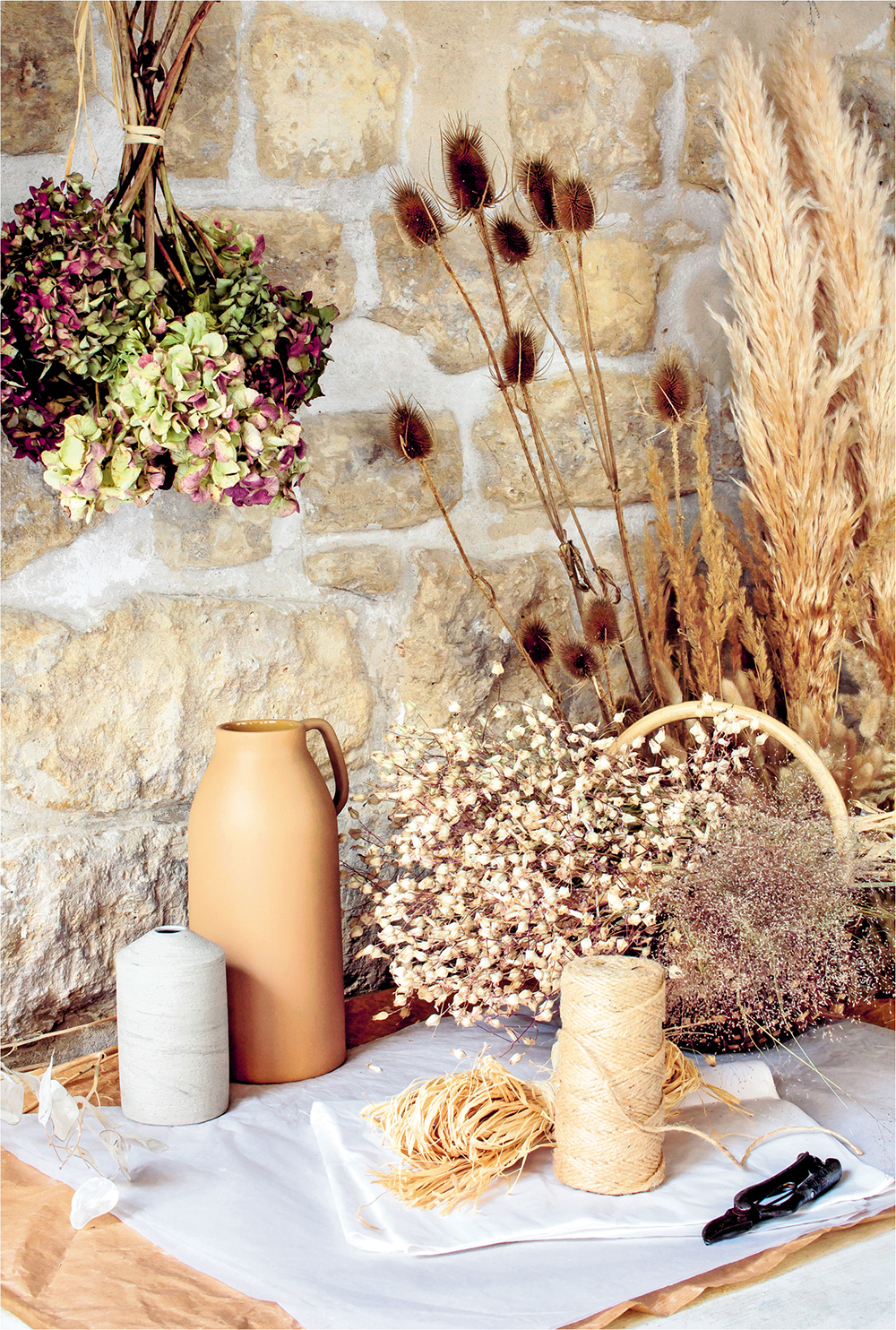
First steps
Drying flowers requires very little in the way of equipment and you can gather many species yourself on your walks in the countryside.
Walkers, keep your eyes open! Some wild flower varieties are within easy reach, growing by the side of roads and paths, for those taking the time to observe nature closely. Species such as hares tail grasses, and other members of the vast Gramineae family that florists sometimes overlook are easy to pick and dry for making beautiful bouquets to preserve!
When setting off on a walk, take a pair of secateurs with you and a basket for gathering your flowers and plant material. Look at nature carefully and respect it by cutting only small quantities of each plant.
Waste no time in starting the drying process! The quality of your dried flowers depends on the raw material; flowers must be really fresh, so prepare them quickly once youve picked them. It is preferable to pick in the morning, in dry, sunny weather, as dampness extends drying time and dulls colours.
Once back from your walk, you can, if needed, stand the stems in water for a few hours to let your treasures regain their freshness before you start to dry them. You can also buy your flowers from your local florist, provided they are really fresh. The flowers will have already travelled to the shop after being harvested, so ask for some from that days delivery. They must not show any signs of wilting, and the leaves and stems must be really green.
Once home, quickly set them to dry. Your florist may also be able to supply you with already dried imported exotic plants, such as Banksias.
YOU WILL NEED
- Secateurs
- Basket
- Raffia
- Tissue paper or Kraft paper
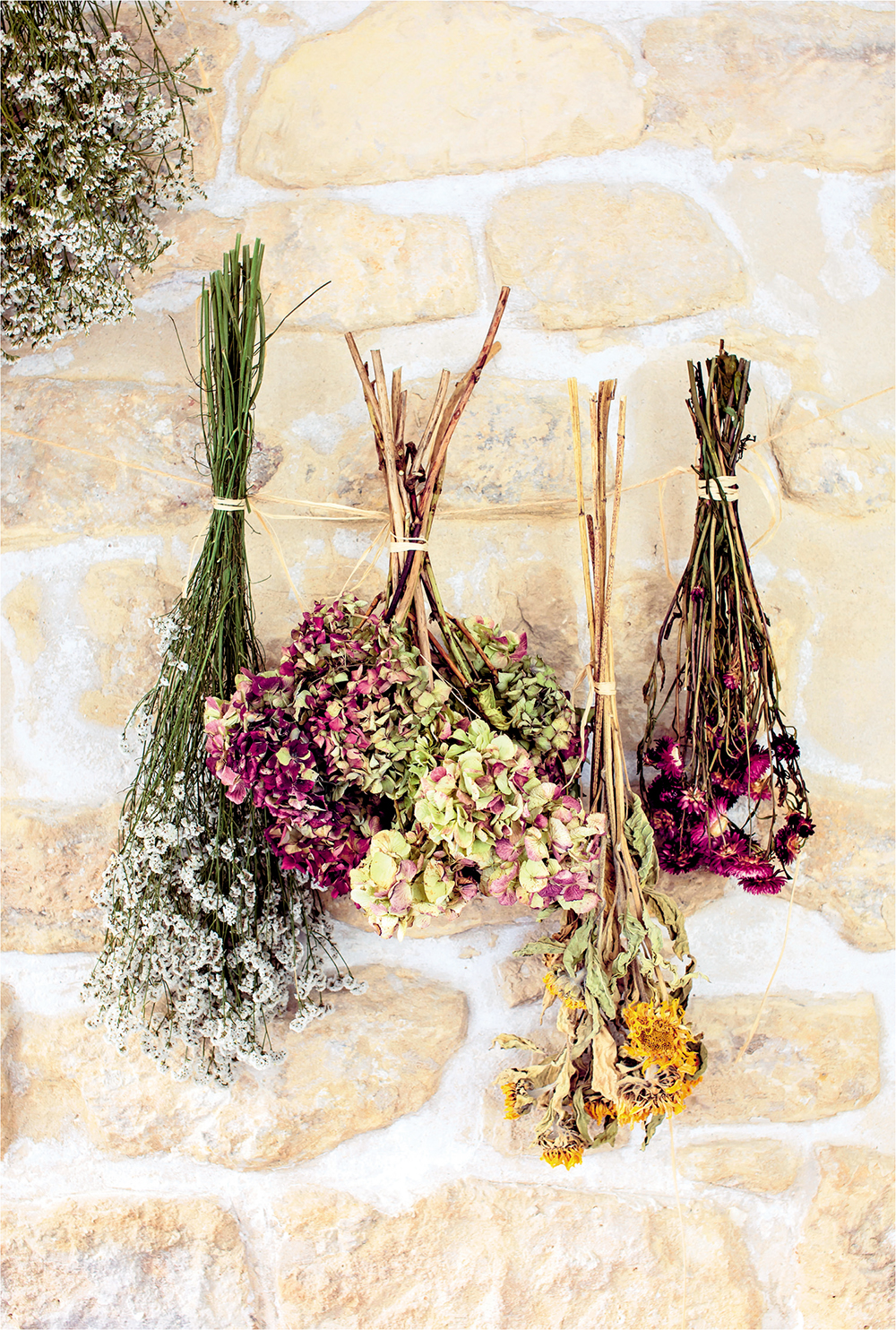
Air-drying technique
Hanging flowers upside down is the easiest and most natural way of drying plant material. Virtually all flowers and grasses can be dried in this way.
Tie your flowers together in small bunches of five to ten stems using a piece of raffia or elastic band. Remove the lower leaves below the point where you tie them together. Fasten tightly as the bouquet will gradually shrink in volume as it dries out. Stagger the height of the flowers so the heads are not touching or damaging each other, and hang your bouquets a sufficient distance apart for air to circulate (approximately 25cm/10in).
The bunches can be hung upside down from a pole or with string, suspended from the ceiling or a hook, provided they are in a well-ventilated area, away from light and protected from dust.
If you cannot dry them away from light, wrap them in kraft paper or tissue paper, covering the entire bouquet, to give the flowers at least a minimum degree of protection.
Drying time varies from one species to another, ranging from a week for small, slender plants, to up to a month for the sturdiest ones. Keep a close eye on them during the drying process; the flowers are dried once the leaves crumble between your fingers.
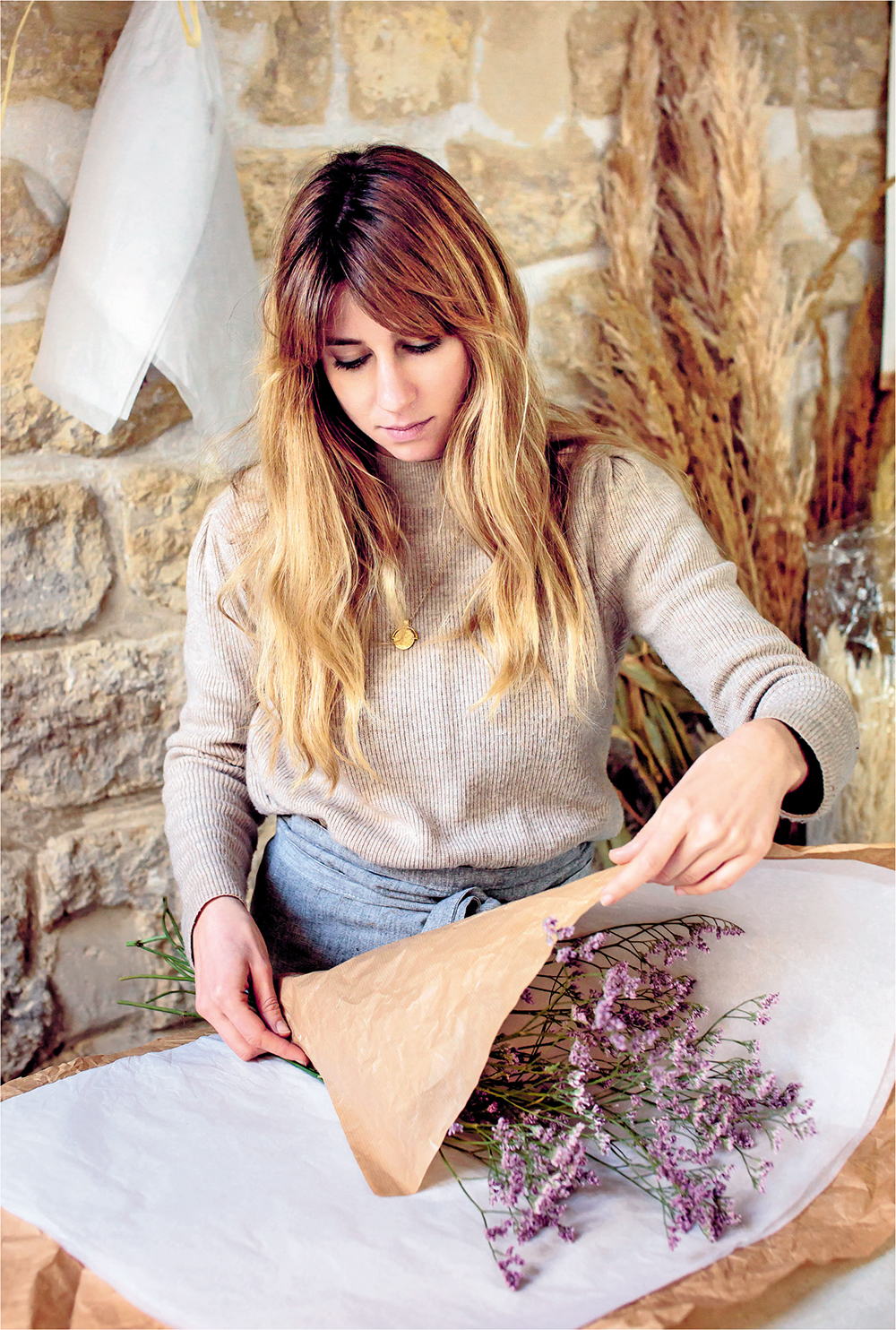
Preserving dried flowers
To store your dried flowers, you can place them flat in a box that has holes punched into it for ventilation.
Dried flowers are fragile and must be handled gently! Wrap each bunch in tissue paper (or absorbent paper) and arrange them head-to-tail in the box. They can be safely stored away like this until you need them.
Once your floral creations are finished, position them, preferably in a room free from damp or humidity. Depending on the species and conditions in which they are kept, certain dried flowers will be able to enhance your home for years to come.
Unfortunately, there is no miracle solution to combat dust and sunlight, which tend to cause flowers to fade over time. But that adds to their charm! You can, however, delicately remove dust from your favourite bouquets using either a hair dryer on a cold setting or a soft paintbrush.
Putting flowers in a glass globe is a highly effective way of protecting them from dust and humidity. (See , page 133.)
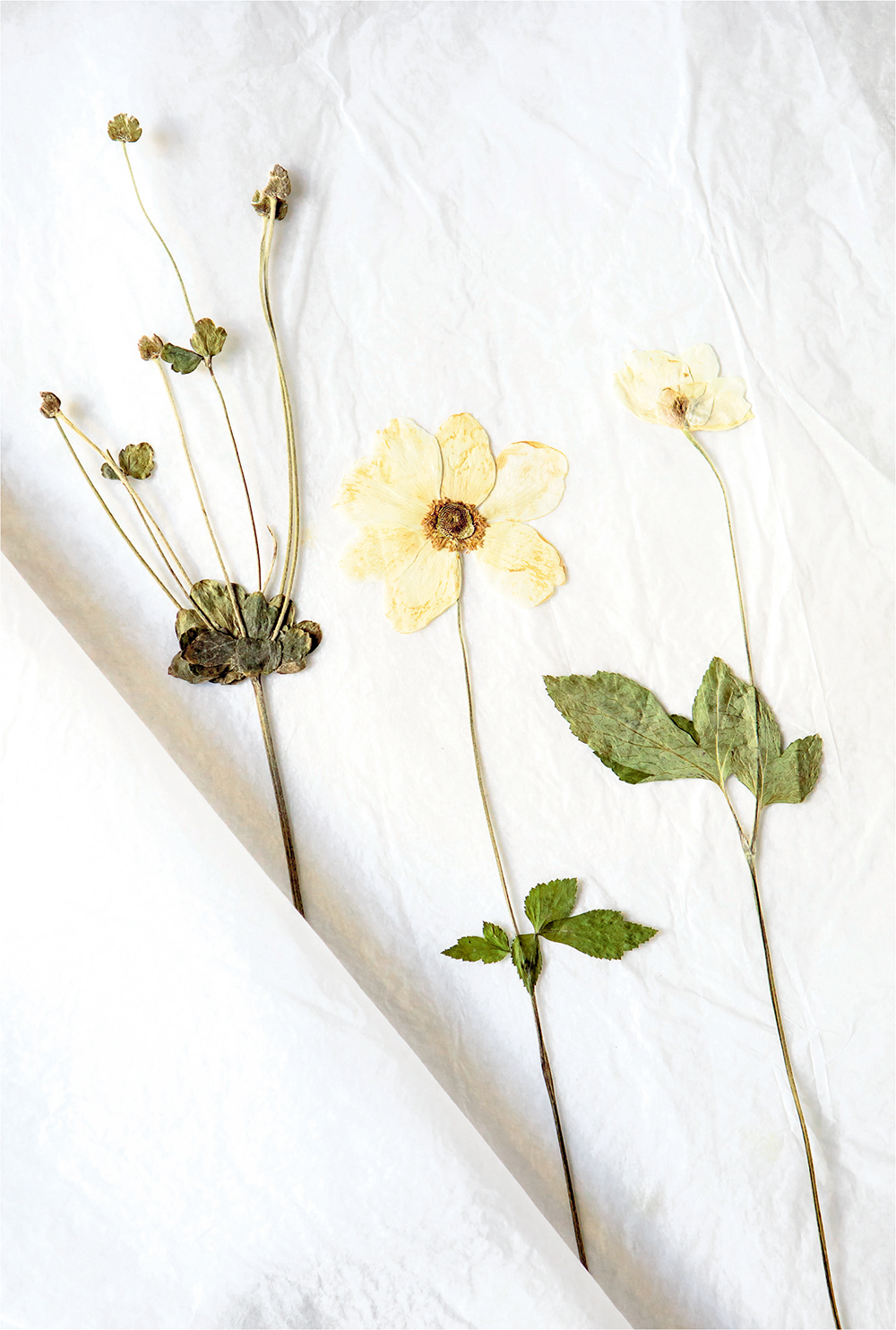
Pressed flowers: preserving flowers in a herbarium



